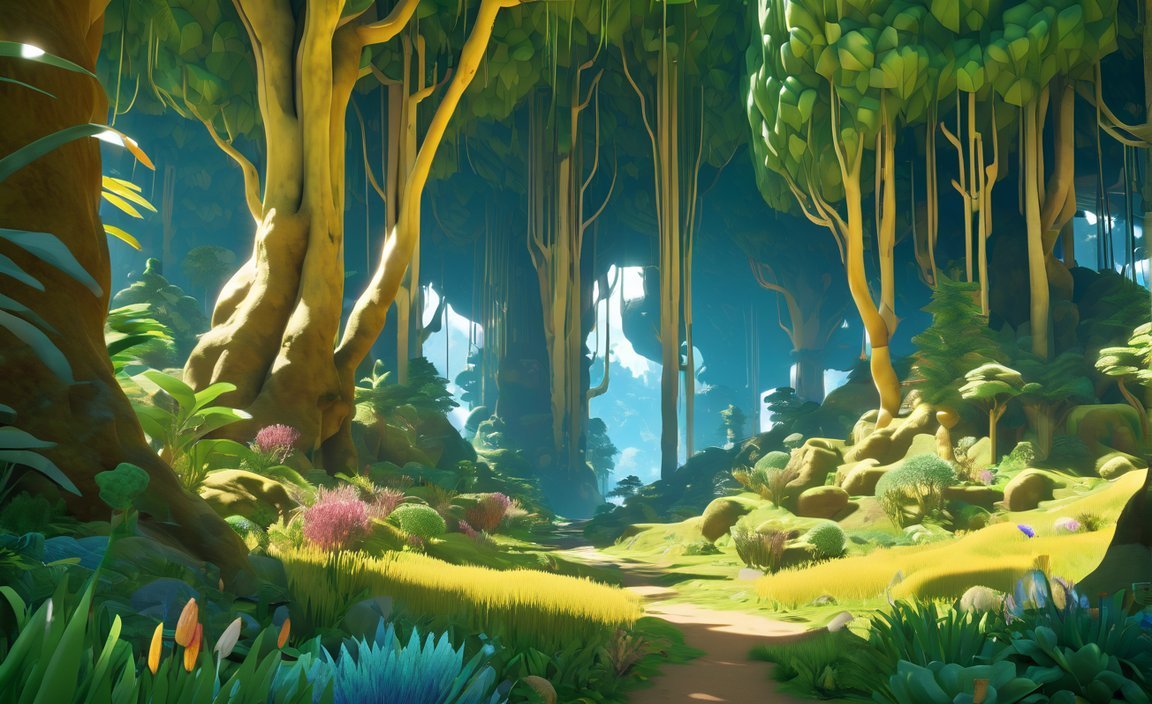Welcome to the captivating world of New Zealand’s diverse biomes. In this immersive journey, we will delve into the enchanting landscapes and rich biodiversity that define this remarkable country. From the towering forests of the North Island to the rugged mountains of the South Island, New Zealand boasts a kaleidoscope of biomes that are teeming with unique flora and fauna. Join us as we explore these biomes, uncovering their hidden treasures and shedding light on the crucial importance of their preservation for future generations. Welcome to the extraordinary realm of New Zealand’s biomes.

Key Takeaways:
- New Zealand has diverse biomes, including temperate broadleaf and mixed forests, montane grasslands and shrublands, Subantarctic islands tundra, and Chatham Islands temperate forests.
- The temperate broadleaf and mixed forest is the most common biome in New Zealand and supports a wide range of plant and animal species.
- Montane grasslands and shrublands are found in high-altitude areas above the tree line and are dominated by tussock grasses.
- The Subantarctic islands tundra is characterized by cold and windy conditions, with low vegetation, and can be found in the southern parts of the country.
- The Chatham Islands temperate forest is a unique biome found on the Chatham Islands and is home to endemic plant and animal species.
- New Zealand’s biomes are influenced by its temperate and subtropical climate, as well as its mountainous regions.
- The country’s environment is characterized by a unique array of endemic flora and fauna that has evolved in isolation.
- New Zealand experiences a variety of natural disturbances, such as landslides, floods, and fires, which have shaped the distribution of species.
- Soil composition in New Zealand varies due to factors like bedrock, climate, and vegetation.
- The climate across New Zealand varies from wet on the West Coast to semi-arid in Central Otago and subtropical in Northland.
Biomes of New Zealand
New Zealand, known for its breathtaking landscapes, boasts a remarkable array of diverse biomes. These biomes, shaped by the country’s unique climate and geological features, harbor a multitude of plant and animal species found nowhere else on Earth. In this article, we will delve into the captivating world of New Zealand’s biomes, exploring their characteristics, ecological significance, and the challenges they face in the modern era.
The Rich Tapestry of New Zealand’s Biomes
One of the prominent biomes in New Zealand is the temperate broadleaf and mixed forest. This biome sprawls across the main islands, offering a haven for an astonishing range of flora and fauna. From towering kahikatea trees to elusive kiwis, these forests teem with life. The alluring mix of native plants and the soothing melody of birdsong make this biome a nature lover’s paradise.
In the high-altitude regions beyond the tree line, we encounter the montane grasslands and shrublands. Dominated by tussock grasses, these vast expanses lead us into a world of untamed beauty. Here, hardy alpine plants cling to the rugged terrain, defying the harsh winds and extreme temperatures. It is a place where the delicate balance between life and nature’s raw forces is strikingly apparent.
Venturing southward, we reach the Subantarctic islands tundra, situated in the four island groups beyond New Zealand. This biome is characterized by its chilly and blustery conditions, a testament to nature’s capacity to adapt and thrive. Low-lying vegetation braves the relentless winds, providing habitats for an array of seabirds and marine life. It is a stark reminder of the resilience of life in even the harshest environments.
Lastly, we cannot overlook the Chatham Islands temperate forest, a unique and isolated biome found exclusively on the Chatham Islands. Within its borders, an assemblage of endemic plants and animals has thrived, untouched by the outside world. This splendid forest serves as a living testament to the incredible process of evolution and adaptation that unfolds in splendid isolation.
The Significance of New Zealand’s Biomes
New Zealand’s biomes are of immense ecological significance, as they harbor an abundance of endemic species found nowhere else on the planet. The country’s isolation from other land masses has allowed its flora and fauna to evolve in extraordinary ways. From tuataras, ancient reptiles reminiscent of the dinosaurs, to the vibrant blooms of the pohutukawa tree, these biomes are veritable treasure troves of biodiversity.
However, these unique ecosystems are not immune to the challenges posed by human activities. Deforestation, invasive species, and climate change threaten the delicate balance within these biomes, jeopardizing the future of countless species. The preservation and conservation of New Zealand’s biomes are vital not only for the well-being of local flora and fauna but also for the global effort to safeguard Earth’s natural heritage.
Conclusion
New Zealand’s diverse biomes offer us a glimpse into the splendid tapestry of nature’s ingenuity. From the enchanting temperate broadleaf and mixed forests to the resilient and wind-swept Subantarctic islands, each biome tells a captivating story of adaptation, survival, and interconnectedness. As we navigate the challenges of the modern world, it is imperative that we recognize the intrinsic value of these biomes and take action to preserve them for the generations to come. By honoring and protecting New Zealand’s biomes, we ensure that their beauty and ecological significance endure, serving as a testament to the intricate dance between nature and humanity.
In search of clever icebreakers? Look no further than these entertaining Geography pick up lines. Ready to impress? Explore our collection of Geography pick up lines here.
Curious about the exact coordinates of Rio de Janeiro? Discover the precise location with Rio de Janeiro coordinates present here.
Embark on a captivating journey into the world of art with the Head of a Roman Patrician. Delve deeper into this masterpiece here.
Types of Biomes in New Zealand
New Zealand is home to a diverse range of biomes, shaped by its unique climate and geological features. These biomes play a crucial role in supporting a rich variety of flora and fauna, many of which are found nowhere else on Earth. In this article, we will explore the different types of biomes found in New Zealand, their characteristics, and the importance of preserving them for future generations.
Temperate Broadleaf and Mixed Forest Biome
One of the most prominent biomes in New Zealand is the temperate broadleaf and mixed forest. This biome is characterized by diverse forests that support a wide range of exotic plants and animals. Within these forests, you can find towering trees, such as the majestic kahikatea and the iconic silver fern. Native birds like the tui and kereru fill the air with their melodic songs, while reptiles like the tuatara and gecko scuttle through the undergrowth.
The temperate broadleaf and mixed forest biome is crucial for maintaining the ecological balance of New Zealand. It acts as a habitat for numerous endemic species and provides vital ecosystem services, such as carbon storage and water filtration. However, this biome faces several threats, including deforestation and the introduction of invasive species. Conservation efforts are essential to protect its unique biodiversity and ensure the well-being of both plants and animals.
Montane Grasslands or Shrublands Biome
In high-altitude regions beyond the tree line, you will find the montane grasslands or shrublands biome. These alpine areas are characterized by open grassy slopes and hardy shrubs that have adapted to survive in harsh climatic conditions. The cushion plants, tussock grasses, and alpine daisies are just a few examples of the unique flora found in these biomes.
The montane grasslands or shrublands biome is known for its breathtaking beauty and ecological significance. It serves as an important habitat for alpine birds, such as the iconic kea and the endangered rock wren. These biomes also play a crucial role in regulating water flow, preventing soil erosion, and providing grazing grounds for native herbivores. However, climate change poses a significant threat to this fragile ecosystem, as rising temperatures and changing precipitation patterns can disrupt its delicate balance.
Subantarctic Islands Tundra Biome
Beyond the main islands of New Zealand, the country extends into the subantarctic region, which is home to the Subantarctic Islands Tundra biome. This biome is characterized by chilly and windy conditions, with a unique combination of tundra and temperate forest ecosystems. The rugged coastline is inhabited by a vast array of seabirds, such as albatrosses and penguins, while the surrounding waters teem with marine life.
The Subantarctic Islands Tundra biome is of immense scientific interest, as it provides valuable insights into the impacts of climate change on remote and isolated ecosystems. It is also a globally significant breeding ground for many seabird species. However, these biomes are vulnerable to human activities, such as introduced predators and pollution. Robust conservation measures are essential to protect the delicate balance of this remote and fragile ecosystem.
Chatham Islands Temperate Forest Biome
Located about 800 kilometers to the east of New Zealand’s main islands, the Chatham Islands are home to a unique and isolated temperate forest biome. This forest is characterized by a rich diversity of endemic plants and animals that have evolved in isolation from mainland species. The towering karaka and kahikatea trees dominate the landscape, providing shelter for native birds like the Chatham petrel and the Chatham bellbird.
The Chatham Islands Temperate Forest biome is of immense ecological importance, as it serves as a refuge for many threatened and endangered species. The isolation of the Chatham Islands has protected its unique biodiversity from some of the pressures faced by mainland ecosystems. However, habitat loss and invasive species introduction remain significant challenges to the conservation of this fragile biome.
Key Takeaways:
- New Zealand is characterized by diverse biomes, including temperate broadleaf and mixed forests, montane grasslands or shrublands, Subantarctic Islands tundra, and Chatham Islands temperate forests.
- The temperate broadleaf and mixed forest biome supports a wide range of flora and fauna and plays a crucial role in maintaining ecological balance.
- The montane grasslands or shrublands biome is found in high-altitude regions and is known for its unique alpine flora and fauna.
- The Subantarctic Islands Tundra biome is characterized by harsh climatic conditions and is a globally significant breeding ground for seabirds.
- The Chatham Islands temperate forest biome is home to a diverse range of endemic species that have evolved in isolation.
- Conservation efforts are vital to protect the biodiversity and ecological integrity of New Zealand’s biomes.
Sources:
– Environment of New Zealand – Wikipedia
– Biomes – New Zealand Climate Report

FAQ
Q1: What are the typical biomes found in New Zealand?
A1: The typical biomes in New Zealand include temperate broadleaf and mixed forest, montane grasslands and shrublands, Subantarctic islands tundra, and Chatham Islands temperate forest.
Q2: What is the dominant biome in New Zealand?
A2: The dominant biome in New Zealand is the temperate broadleaf and mixed forest, which covers most of the main islands and supports a diverse flora and fauna.
Q3: Where can montane grasslands and shrublands be found in New Zealand?
A3: Montane grasslands and shrublands are found in high-altitude areas above the tree line in New Zealand.
Q4: What is unique about the Chatham Islands temperate forest biome?
A4: The Chatham Islands temperate forest is a unique biome on the Chatham Islands and consists of endemic plants and animals that are not found elsewhere in New Zealand.
Q5: How are New Zealand’s biomes influenced by its climate?
A5: New Zealand’s biomes are influenced by its temperate and subtropical climate, as well as its large mountainous areas. These factors contribute to the diversity and distribution of different biomes across the country.












